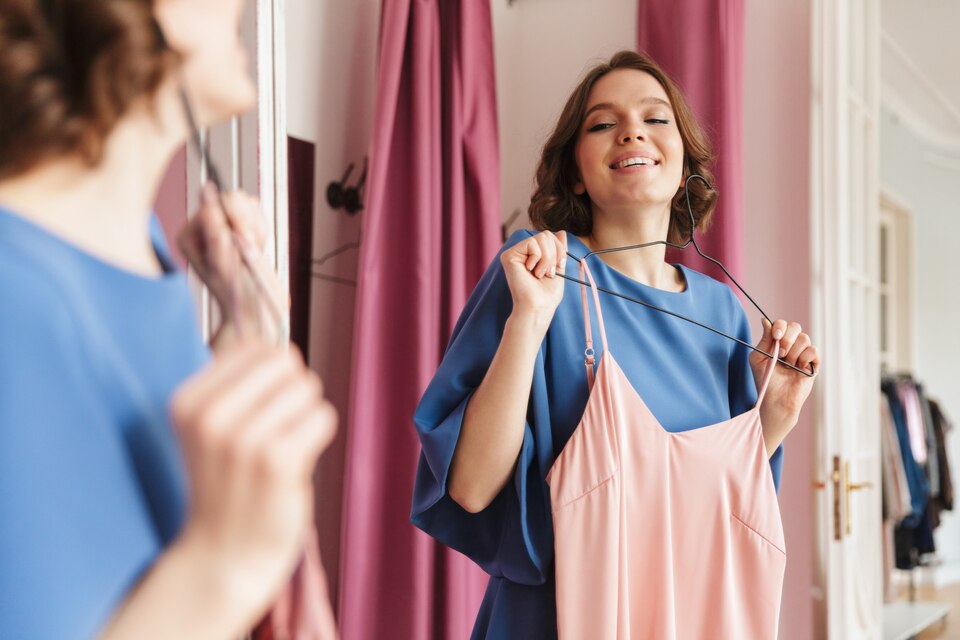Sustainable fashion has taken center stage in an era marked by environmental awareness and ethical considerations. “A Guide to Sustainable Fashion: How to Dress Ethically” offers a comprehensive roadmap for individuals seeking to make responsible and stylish choices in their clothing selections. Dive into the world of sustainable fashion and find out how to dress ethically without compromising on personal style.
Understanding Sustainable Fashion
Sustainable fashion, a movement founded on ethical and environmental responsibility, involves making choices that minimize environmental harm and uphold fair labor practices. In a world where the fashion industry is notorious for its environmental footprint and labor injustices, understanding the core principles of sustainability is paramount.
It encompasses utilizing eco-friendly materials, reducing waste, and promoting fair treatment of workers throughout the supply chain. By comprehending these principles, consumers can become more informed and conscientious participants in the sustainable fashion movement.
Building a Sustainable Wardrobe
The journey towards dressing ethically begins with an evaluation of your existing wardrobe. Responsible wardrobe management involves decluttering and responsibly disposing of clothing you no longer need. Embracing minimalism, a fundamental tenet of sustainable fashion encourages us to prioritize quality over quantity. By curating a collection of versatile, high-quality pieces, you can reduce waste and make a meaningful shift towards a more sustainable wardrobe.
Shopping Sustainably
Sustainable fashion isn’t solely about purging your closet; it’s also about making conscious choices when adding new pieces. Eco-friendly materials, like Tencel, organic cotton, and recycled fabrics, are critical for sustainable fashion. Ethical fashion brands committed to transparency, fair wages, and ethical practices should be sought out and supported. Additionally, thrifting, upcycling, and second-hand shopping provide sustainable alternatives that reduce the demand for new production.
Sustainable Fashion on a Budget
Contrary to popular opinion, sustainable fashion doesn’t have to split the bank. While some sustainable brands may have higher price tags, the long-term cost-effectiveness of sustainable choices is often overlooked. Investing in quality, durable clothing can minimize the need for frequent replacements. Thrifting and second-hand shopping also offer budget-friendly options. Sustainable fashion on a budget is achievable and a prudent choice for your wallet and the planet.
Caring for Sustainable Clothing
Proper care and maintenance of your sustainable clothing are vital to extending its lifespan. Sustainable fashion isn’t just about buying responsibly; it’s also about responsible garment care. Eco-friendly laundry practices, such as cold water and eco-friendly detergents, can reduce environmental impact. Learning basic repair and upcycling skills can help you breathe new life into well-loved pieces, reducing waste and contributing to a circular fashion economy.
Supporting Sustainable Practices
Supporting sustainable fashion goes beyond individual choices; it involves advocating for change within the industry. As consumers, we hold the power to drive sustainability by demanding transparency and ethical practices from brands. Engaging in discussions, supporting sustainable initiatives, and holding companies accountable for their environmental and ethical impact are all ways to make a difference. By collectively pushing for change, we can contribute to a fashion ecosystem prioritizing people and the planet.
Sustainable Fashion and Personal Style
Balancing personal style with sustainable fashion is entirely feasible. Sustainable choices span various aesthetics, from minimalist to bohemian, allowing individuals to express their unique fashion preferences while making ethical choices. Embrace the creativity of sustainable fashion, mix and match eco-friendly pieces, and celebrate the beauty of conscious dressing. Your style can flourish within sustainability, proving that fashion can be an art form and a force for positive change.
Is sustainable fashion only for those who can afford luxury brands?
Sustainable fashion is not exclusive to luxury brands. While some sustainable brands may have higher price points, many affordable options are available. Thrift stores, second-hand shops, and eco-friendly brands offer many sustainable choices. Investing in quality pieces may have an upfront cost, but their longevity and versatility often make them cost-effective in the long run.
How can I determine if a fashion brand is genuinely ethical and sustainable?
Identifying ethical and sustainable brands requires research. Look for GOTS (Global Organic Textile Standard) or Fair Trade certifications. Investigate a brand’s transparency about its supply chain and labor practices. Sustainable brands often publish detailed information on their websites. Lastly, read reviews and seek recommendations from ethical fashion communities to verify a brand’s commitment to sustainability.
Can I still express my style while dressing sustainably?
Absolutely! Sustainable fashion is about making choices that align with your values. Various sustainable brands and options are available, allowing you to express your unique style. Whether you prefer minimalist, bohemian, or eclectic fashion, there are sustainable pieces that cater to all tastes. Sustainable fashion encourages creativity and individuality in dressing ethically.
Is thrifting a sustainable option?
Thrifting is a highly sustainable option. It expands the lifespan of clothing and declines the demand for new production. Thrift stores offer a wide range of styles and affordable choices. By thrifting, you contribute to a circular fashion economy, essential for reducing textile waste and conserving resources.
How can I make my existing wardrobe more sustainable without discarding everything?
You can make your existing wardrobe more sustainable by taking a few steps:
⦁ Declutter and responsibly dispose of clothing you no longer need by donating or recycling.
⦁ Focus on wearing and cherishing your pieces, reducing their environmental impact.
⦁ Consider alterations or repairs to extend the lifespan of well-loved items.
Sustainable fashion also includes responsible wardrobe management.
Conclusion
In a world where fashion has often come at a considerable cost to the environment and ethical standards, pursuing sustainable fashion is a crucial step toward positive change. Understanding sustainable fashion principles, building a conscious wardrobe, shopping responsibly, caring for your clothing, and supporting ethical brands are all actionable steps towards dressing ethically. Sustainable fashion is not a trend; it’s a fundamental shift in how we approach clothing, promoting a more responsible and compassionate relationship with fashion and the planet.


